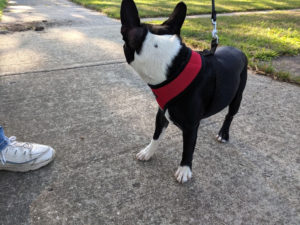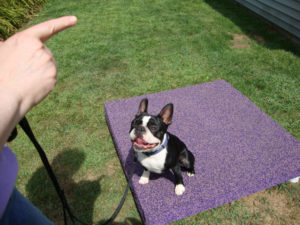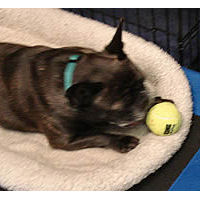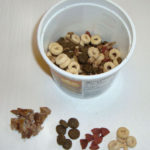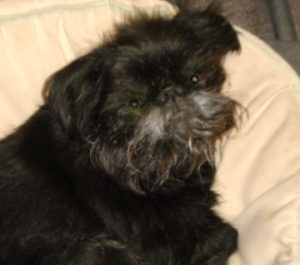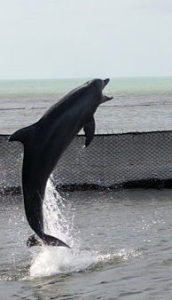You know how you can overlook stuff that’s right in front of you? Like the time you searched all over for your phone and you were holding it in your hand?
Traffic jam!
We’ve been suffering with a traffic jam at our house forever. We have a very narrow entryway from the back door of the house. And when we come in from the yard, all the dogs congregate in that narrow entry, waiting for their “go home!” treats.
Needless to say, with four dogs and two people trying to get into a space that’s not more than nine feet square, it got a little crowded. And a little tense.
Oh yeah, we’re dog trainers…
Then one day we remembered we’re dog trainers. We had to think of a behavior we could teach the dogs that would solve the crowding issue. And get them out of the doorway before bad weather arrives and coats, boots, and parkas are added to the mix.
It was a perfect opportunity to put our own 2-Minute-Trainer system to work.
We thought about what we wanted to accomplish:
- get the dogs to move further into the kitchen and out of the doorway.
- We pictured what we wanted the result to look like:
- all the dogs lined up, sitting on a yoga mat.
We decided what we wanted to call the behavior:
Line Up!
We implemented the plan on our next entry.
When we called the dogs into the house, we immediately moved over by the mat for the Line Up! We called the dogs over, saying Line Up! As each dog stepped on the yoga mat we told him to “Sit!,” gave him a treat, and said “Good Line Up!”
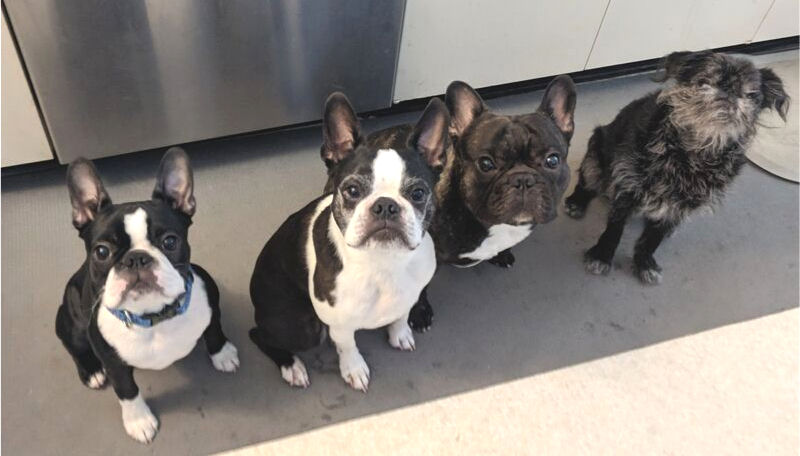
All of the dogs still sitting on the mat got a treat each time another dog joined the “Line Up.” So the first dog on the mat got the most treats! Now all the dogs dash over to the mat when they hear “Line Up!” And we go down the line rewarding each dog multiple times. When everyone’s inside and we’re done, we give our dogs their “release cue” – “Go!”
We solved the problem in just two days. So far we haven’t asked the dogs to maintain a particular order in their “Line up!” behavior, but that would be an easy addition if we want to add it later.
Dogs love routine and love knowing what they’re supposed to do. Giving them a better choice has reduced the aggravation of coming in the house. Seeing them all lined up, sitting like good boys, lets us enjoy coming home every single time.

